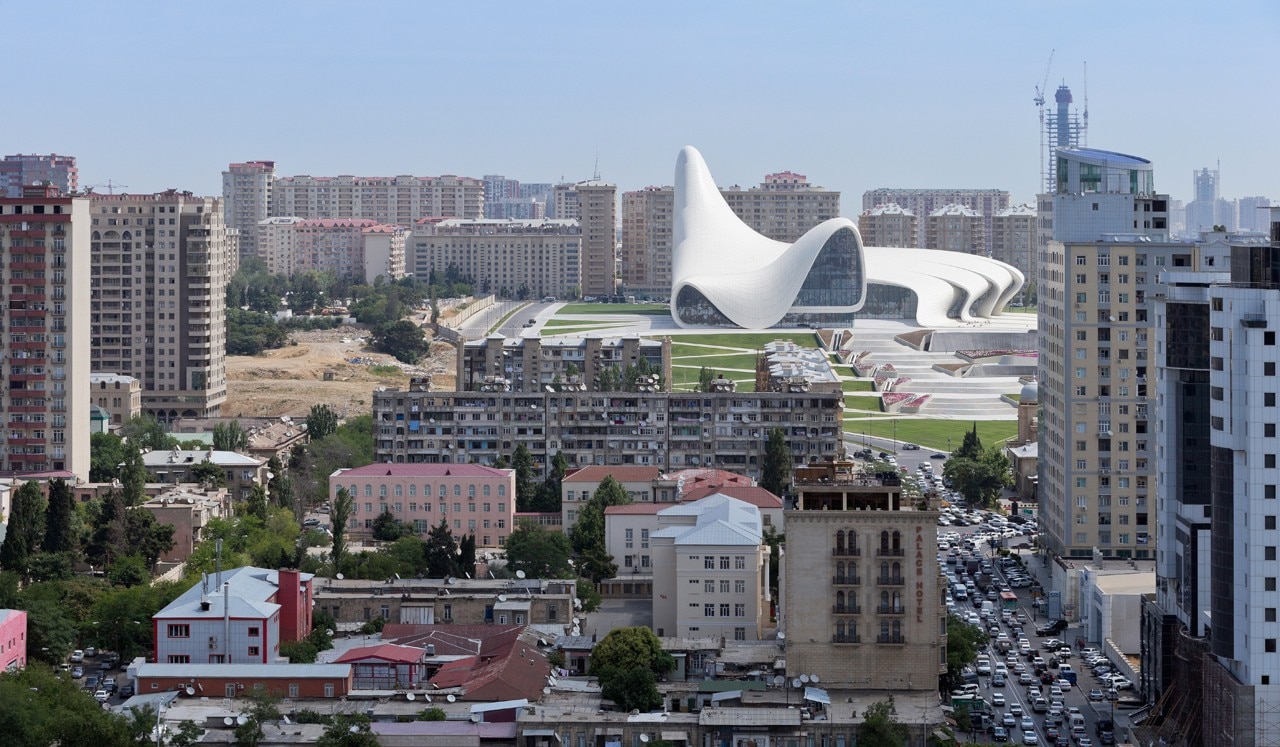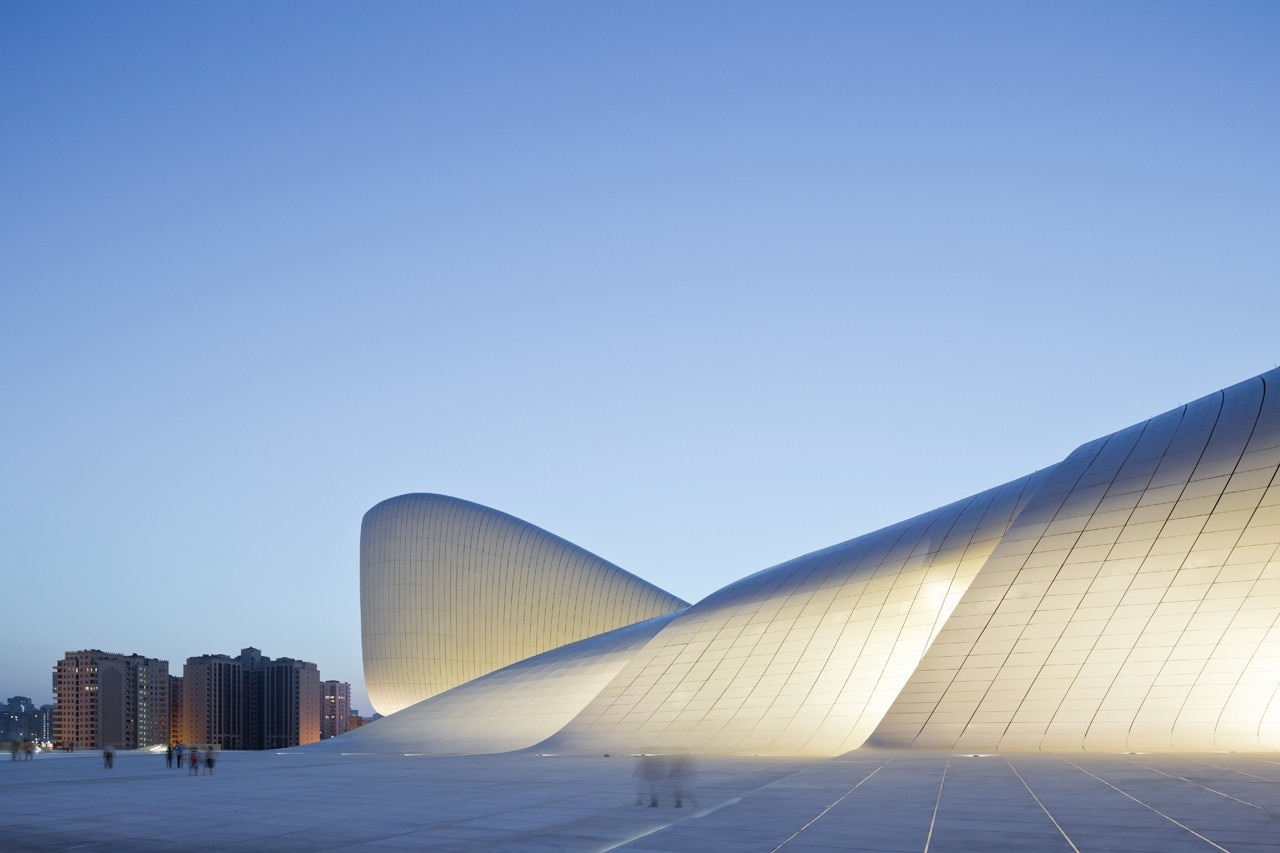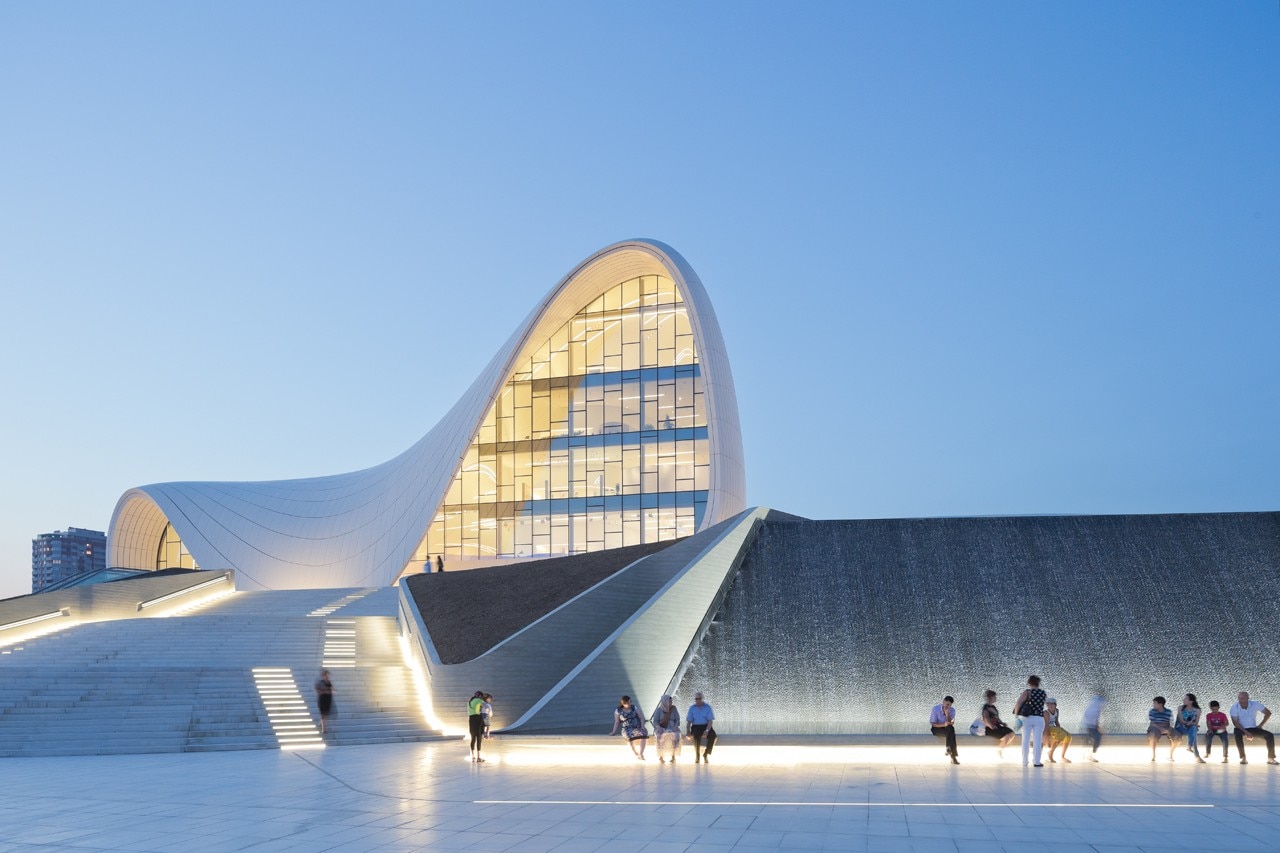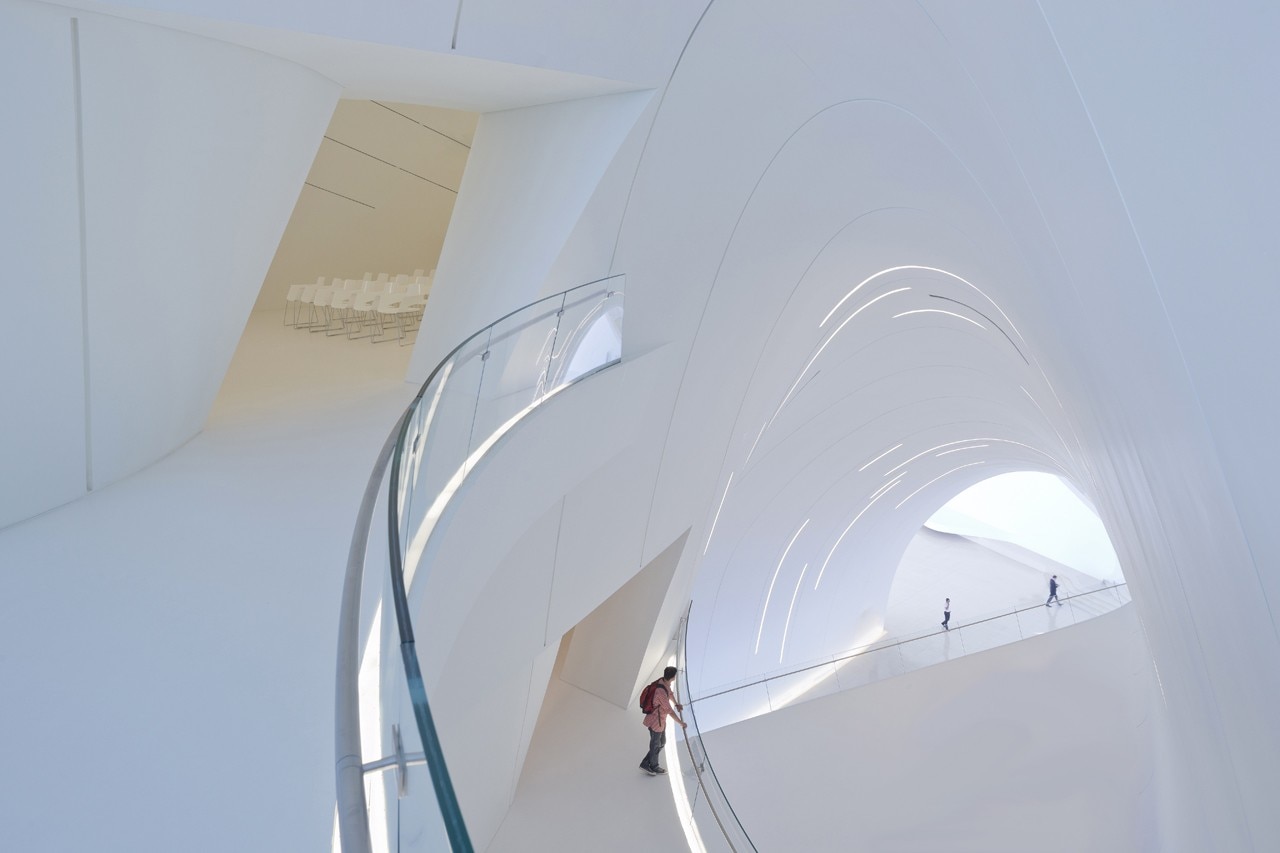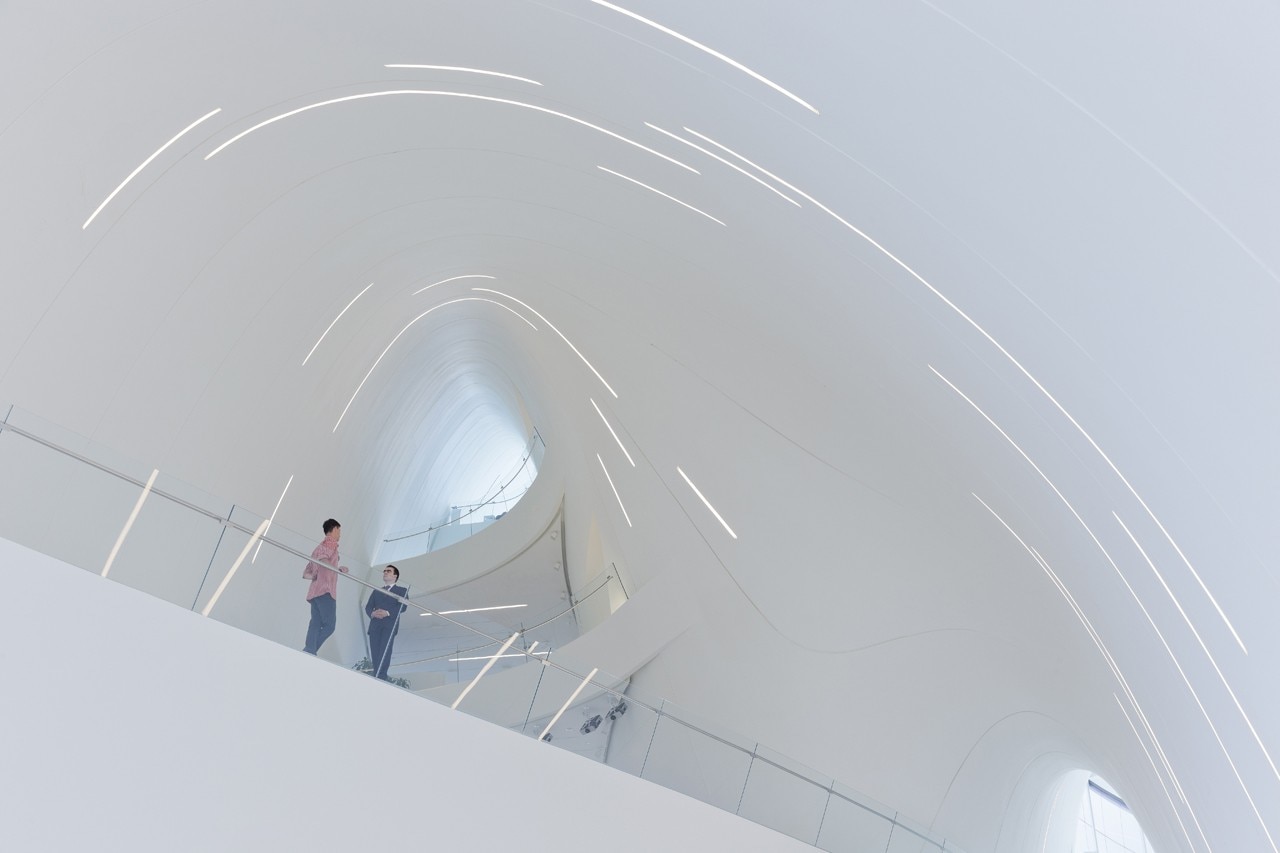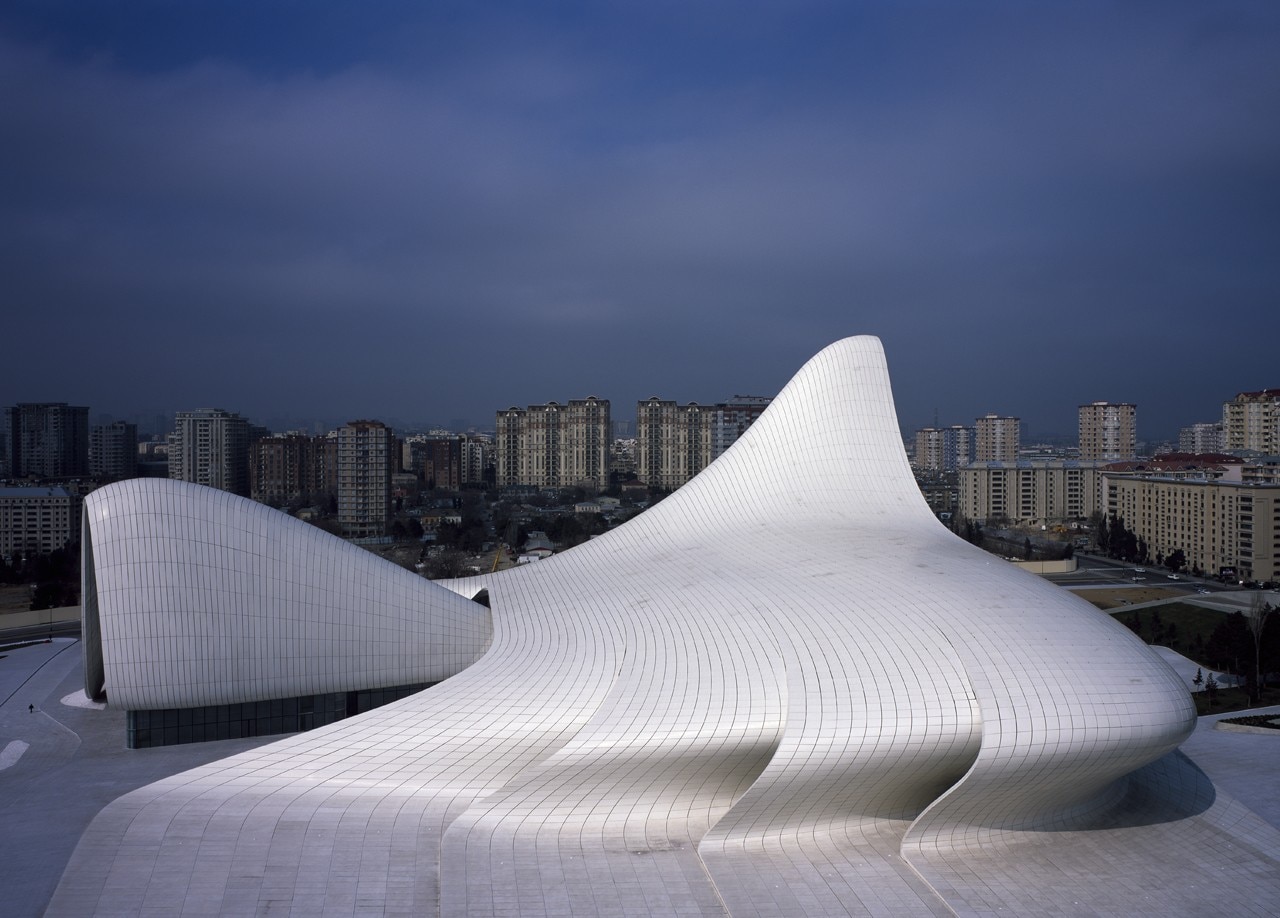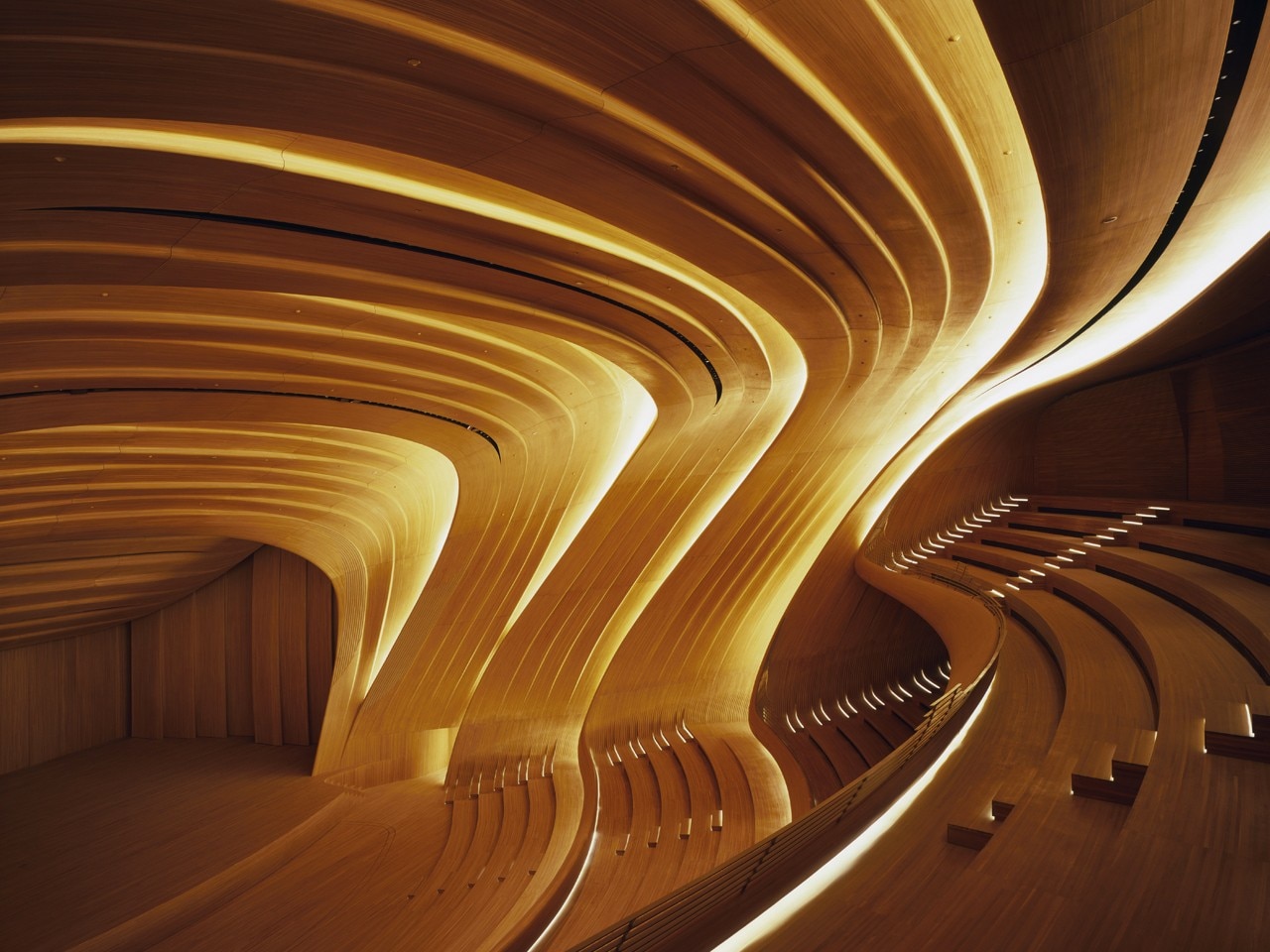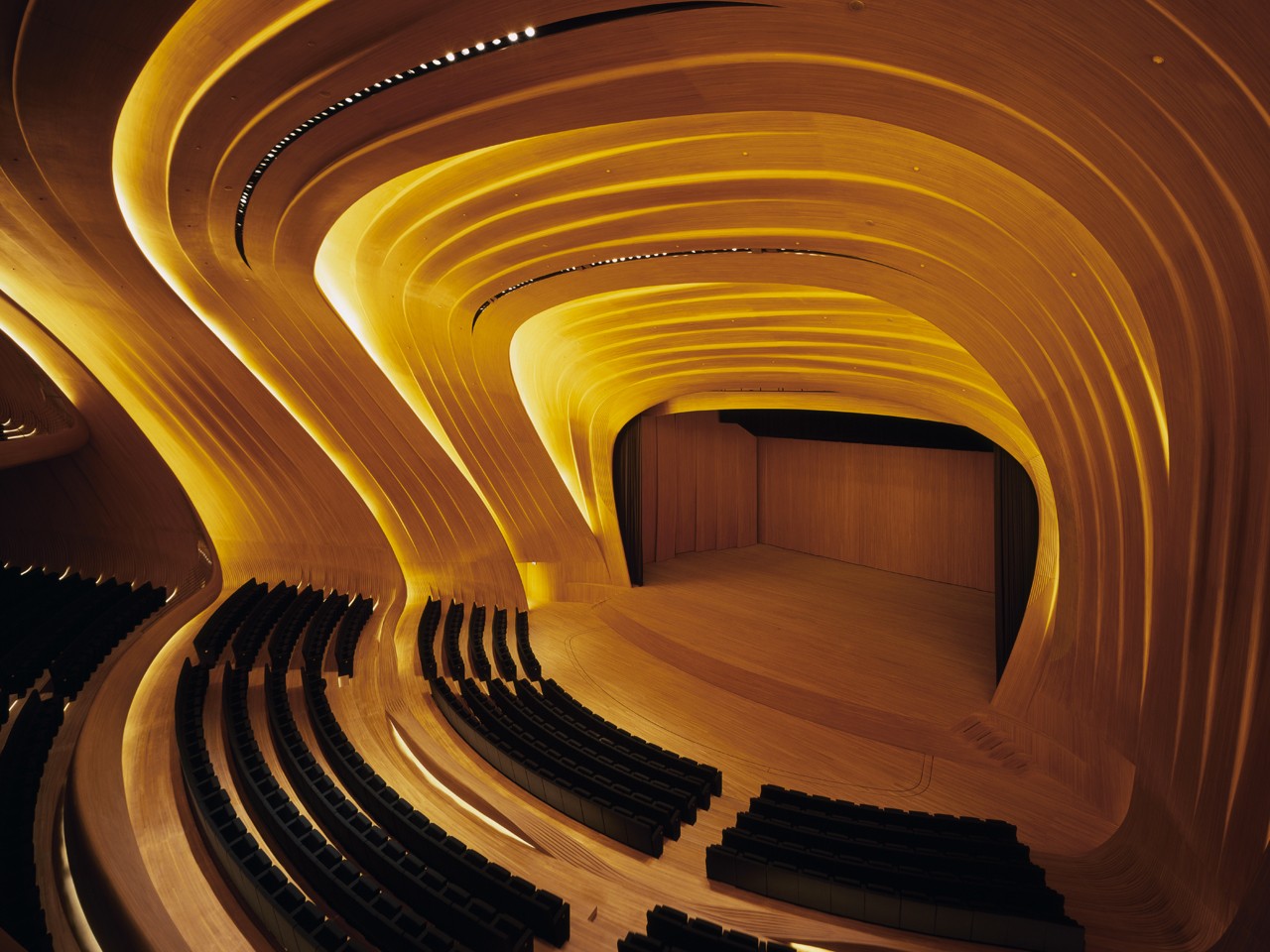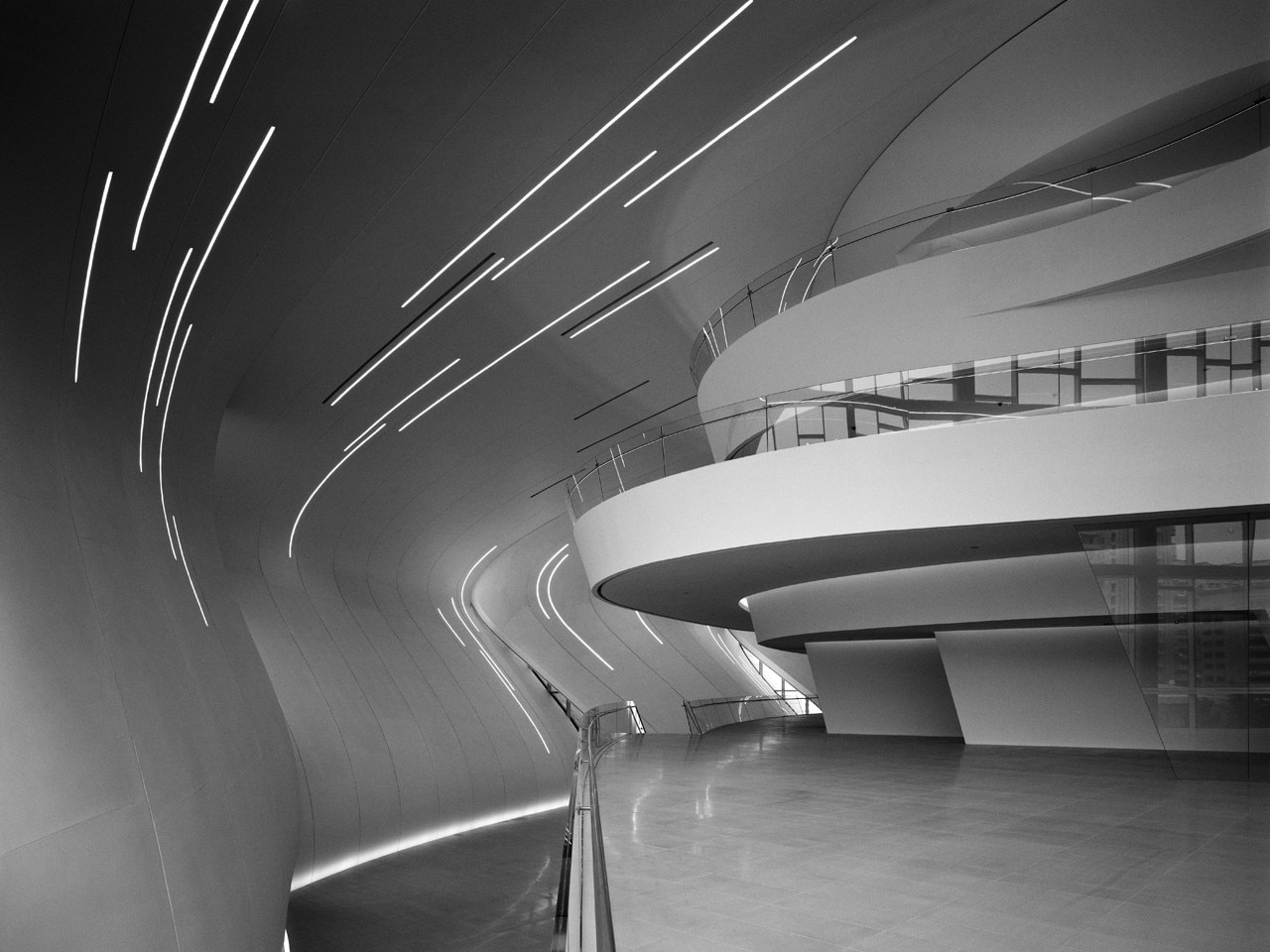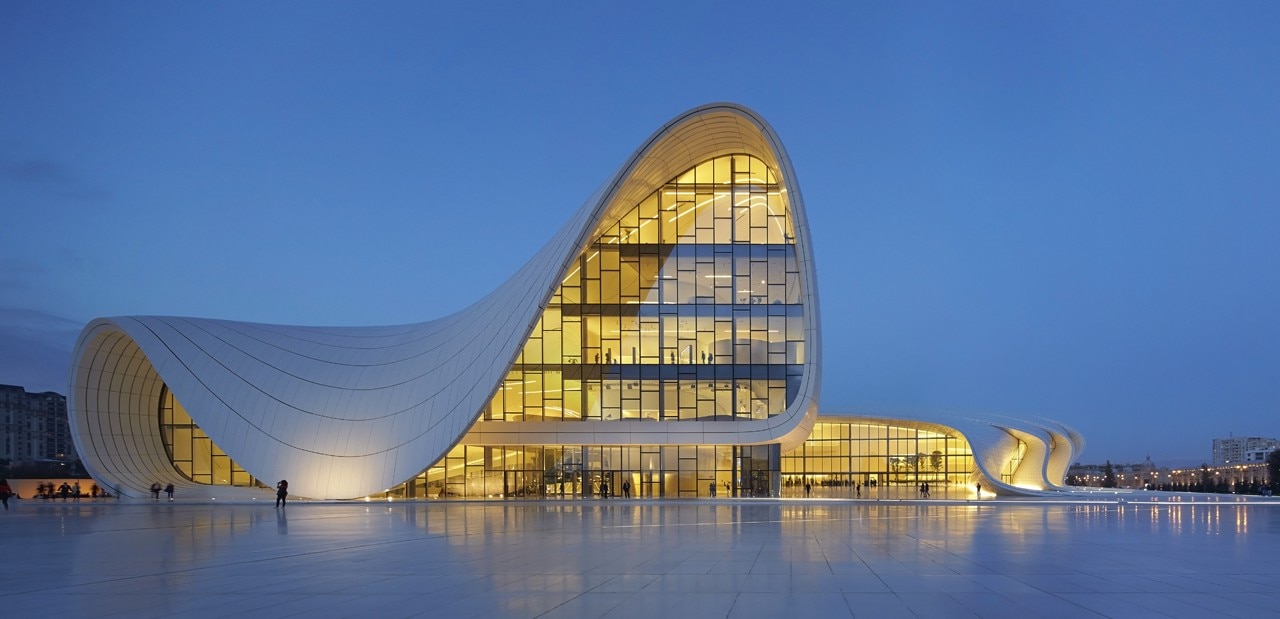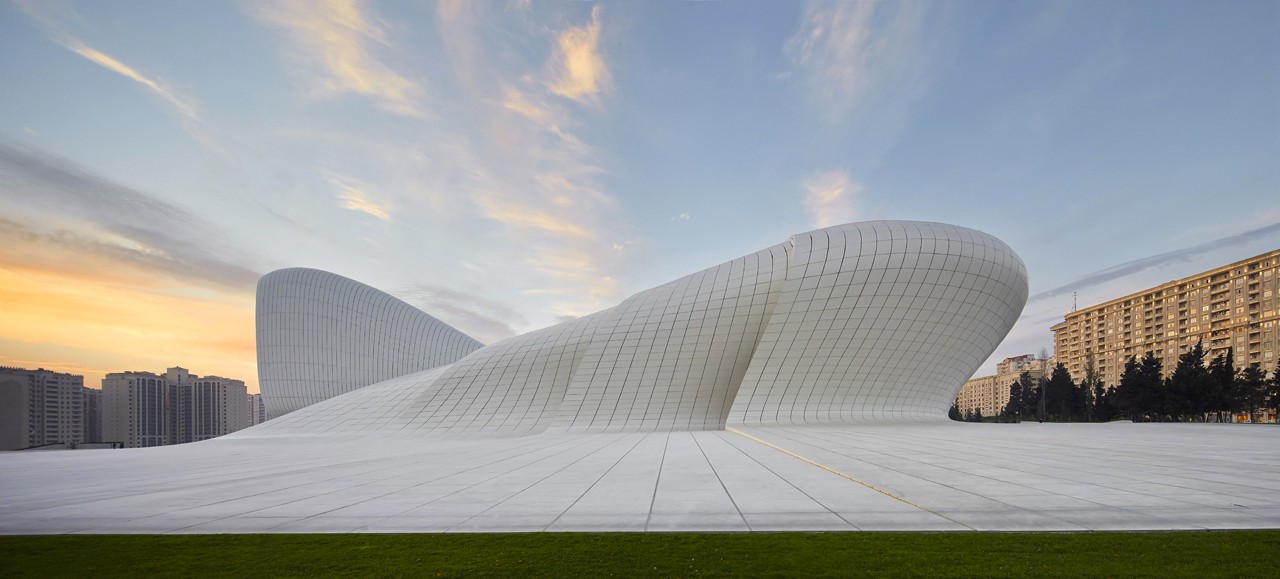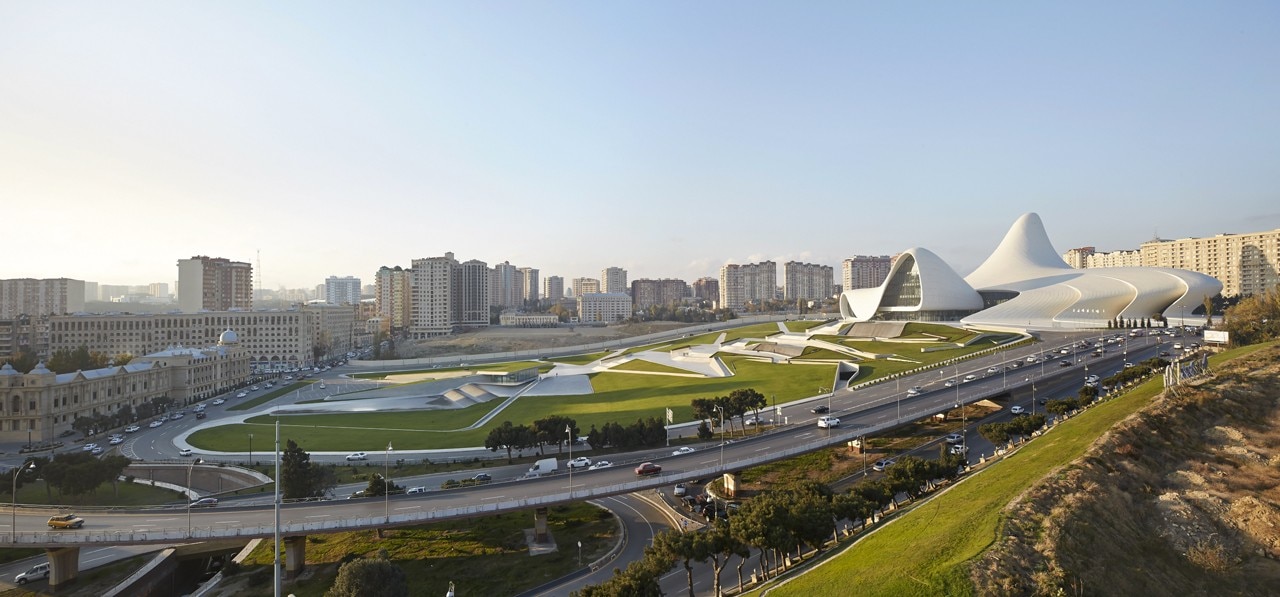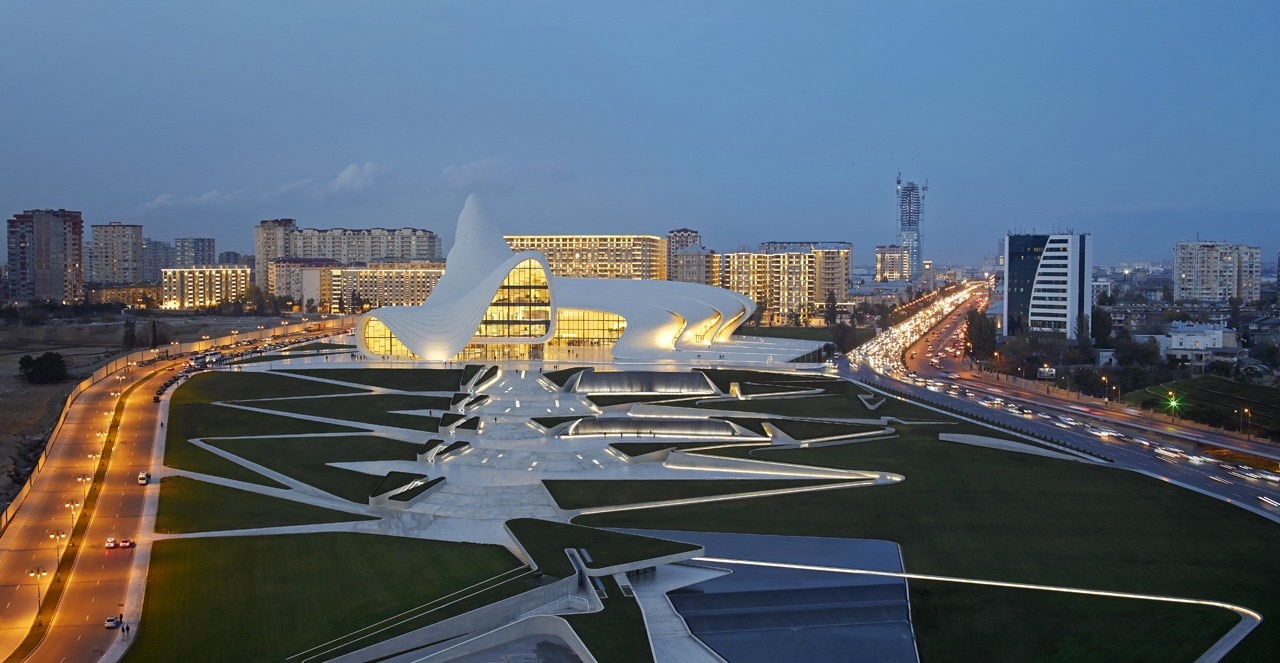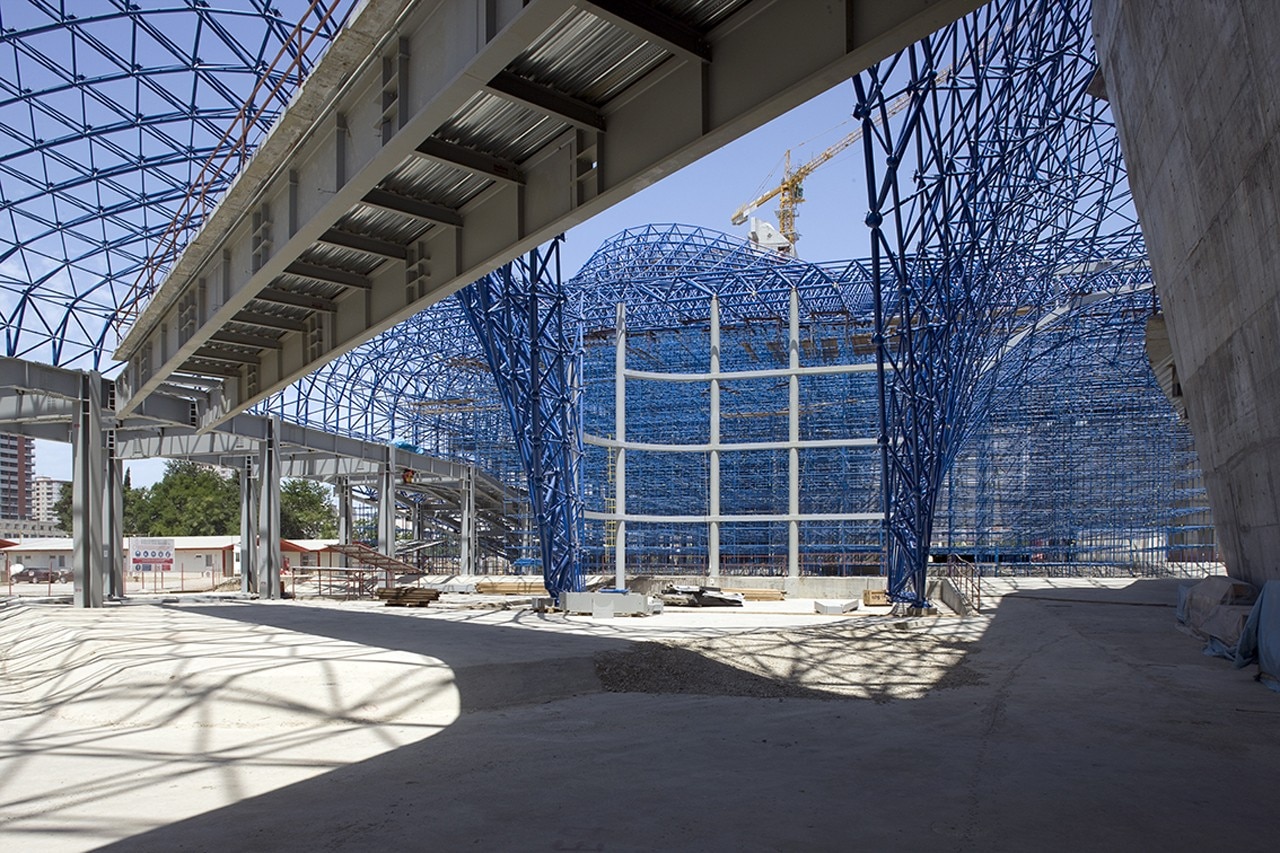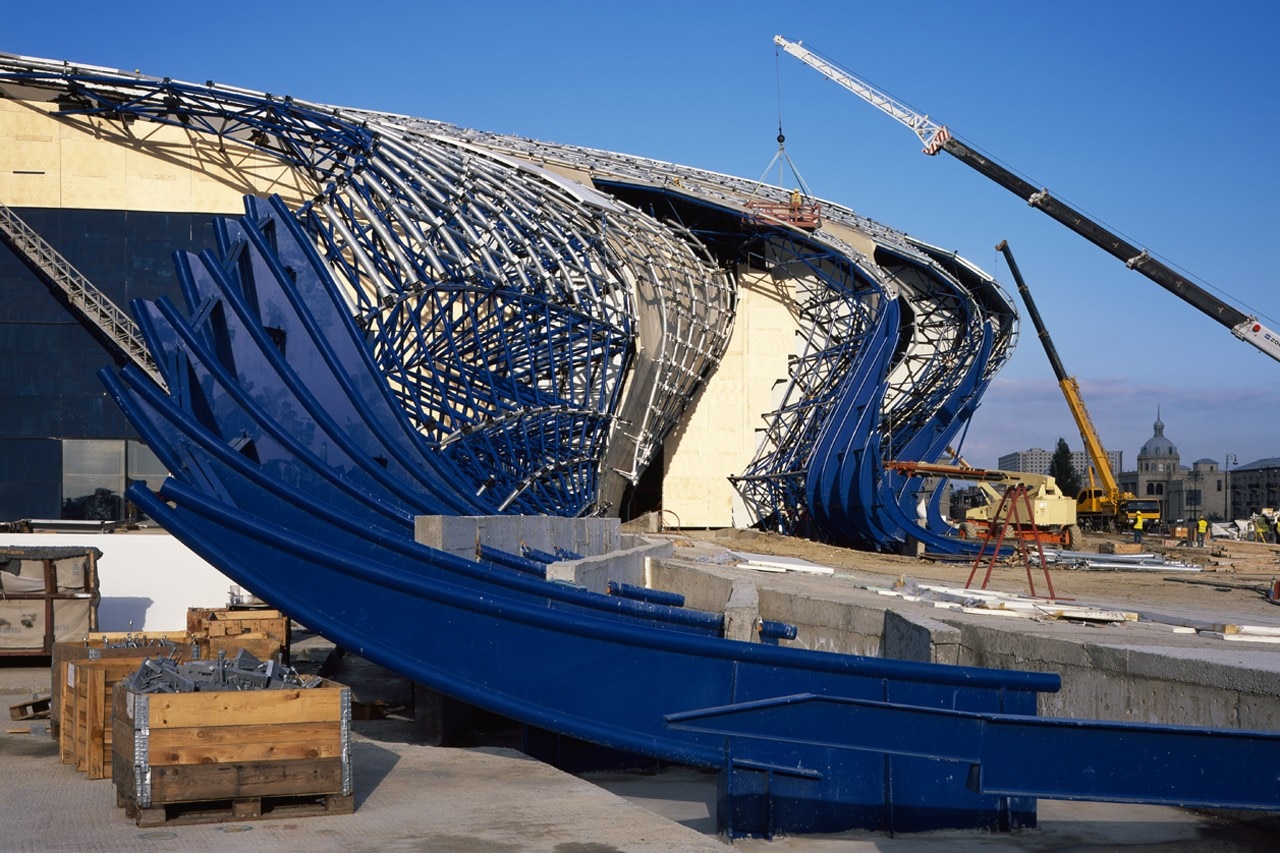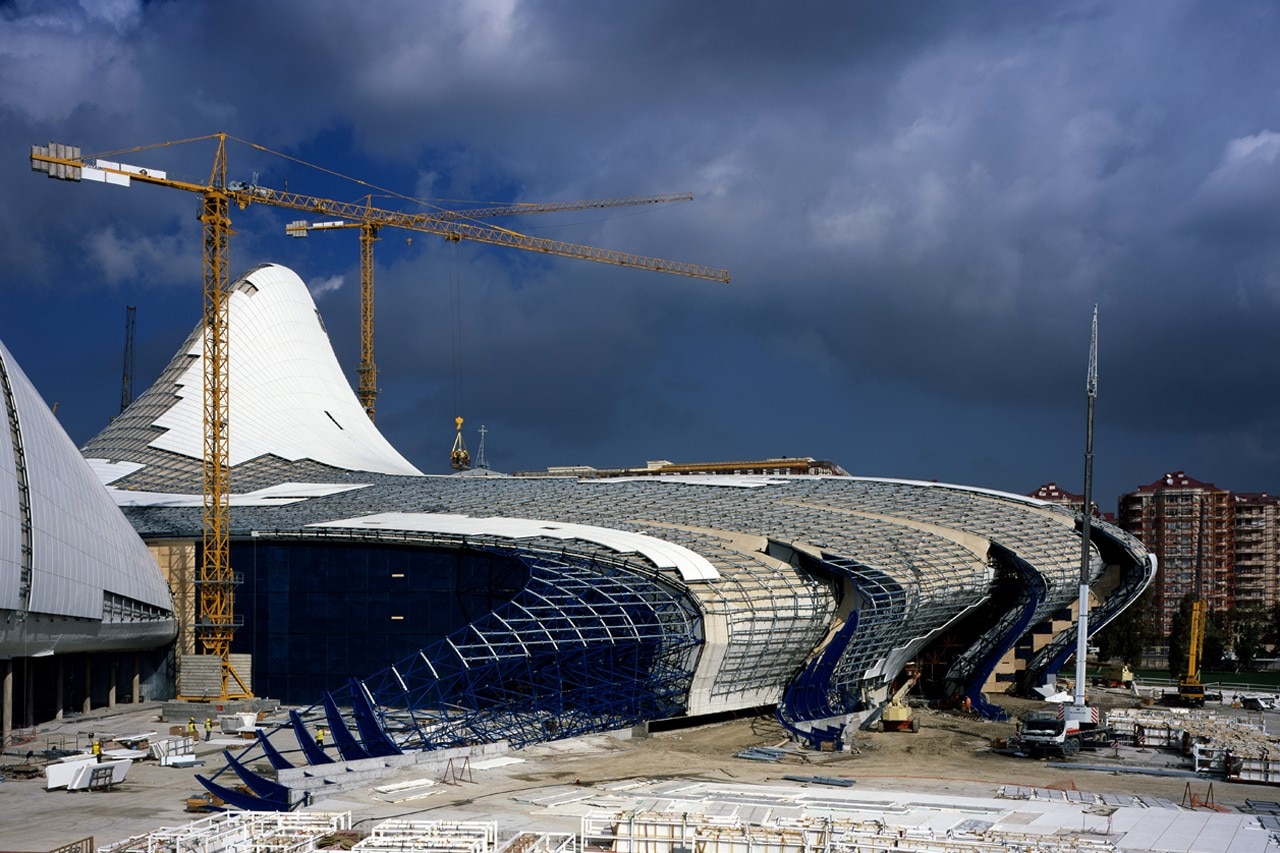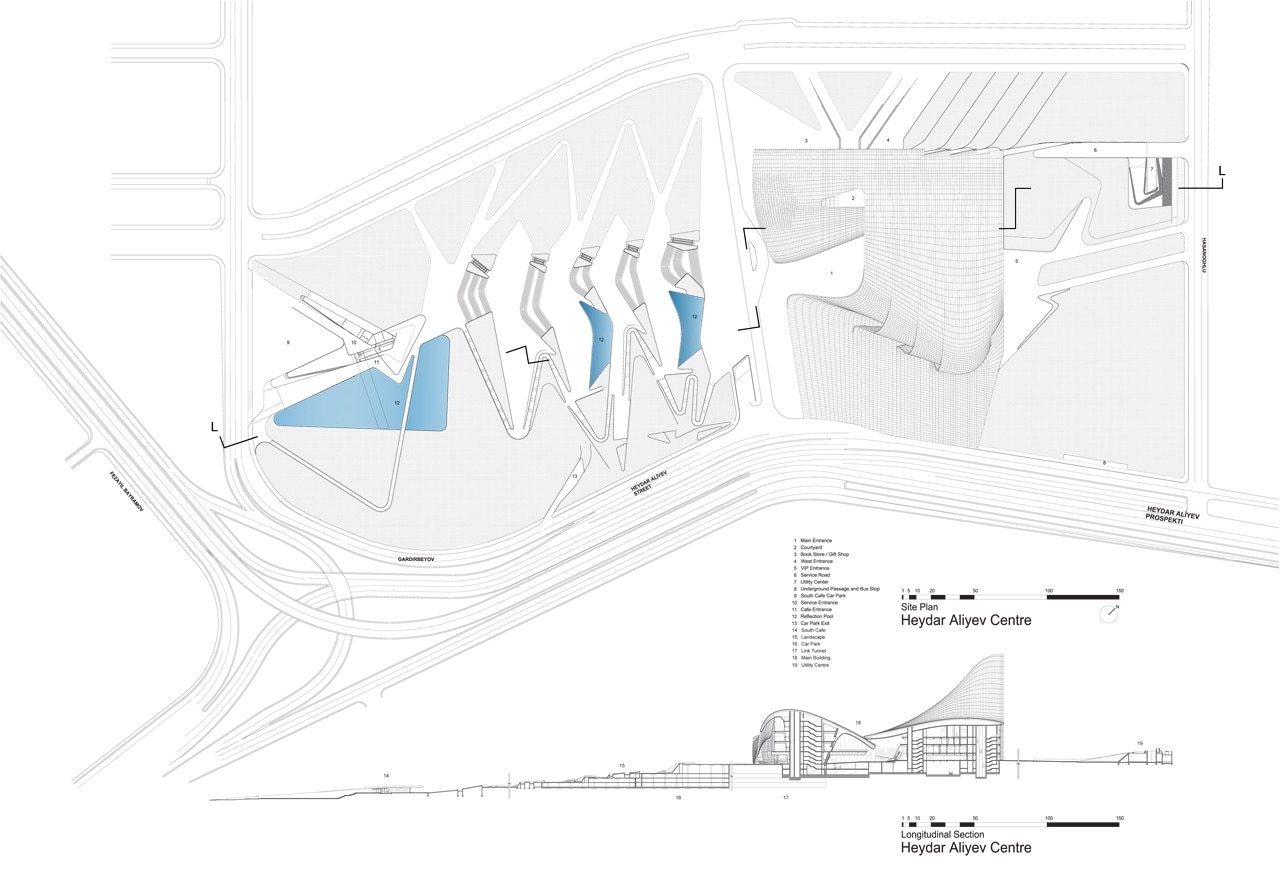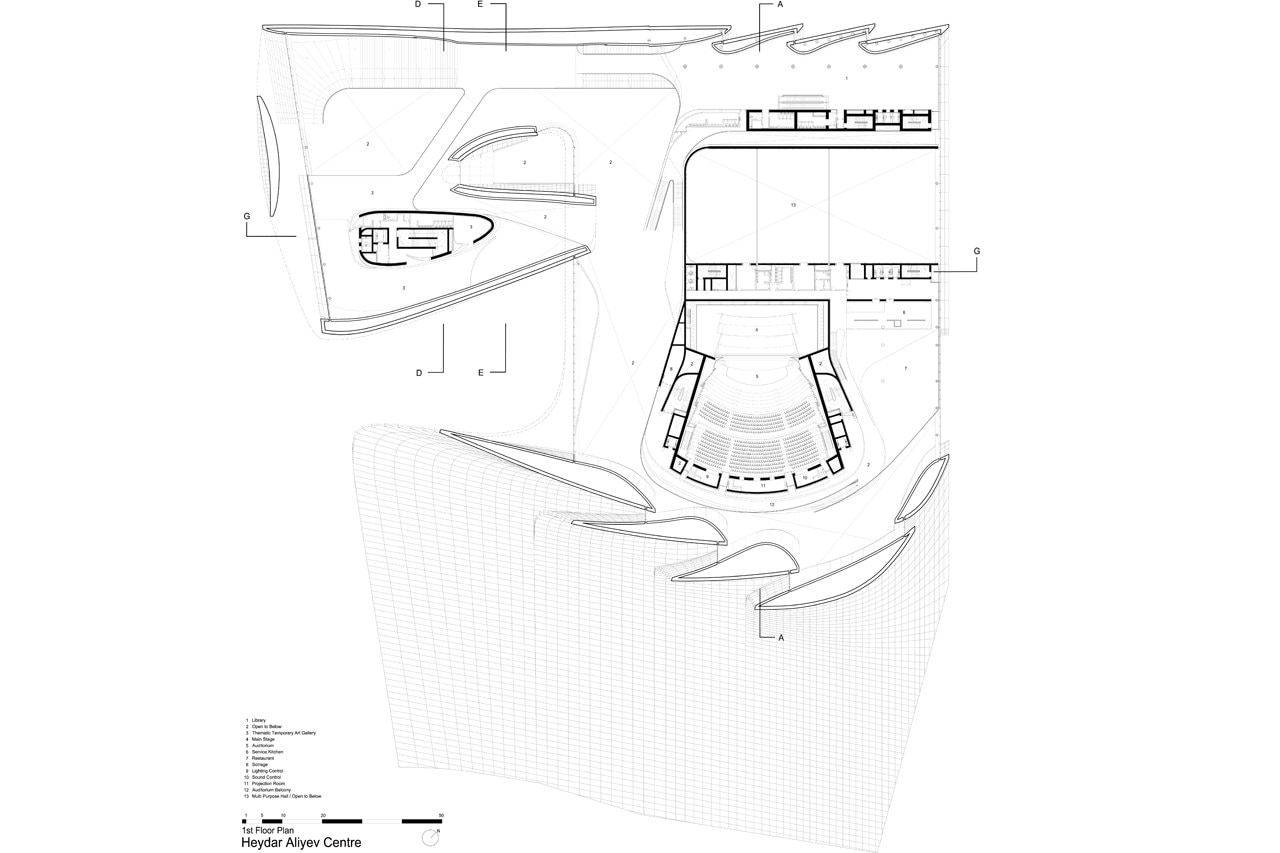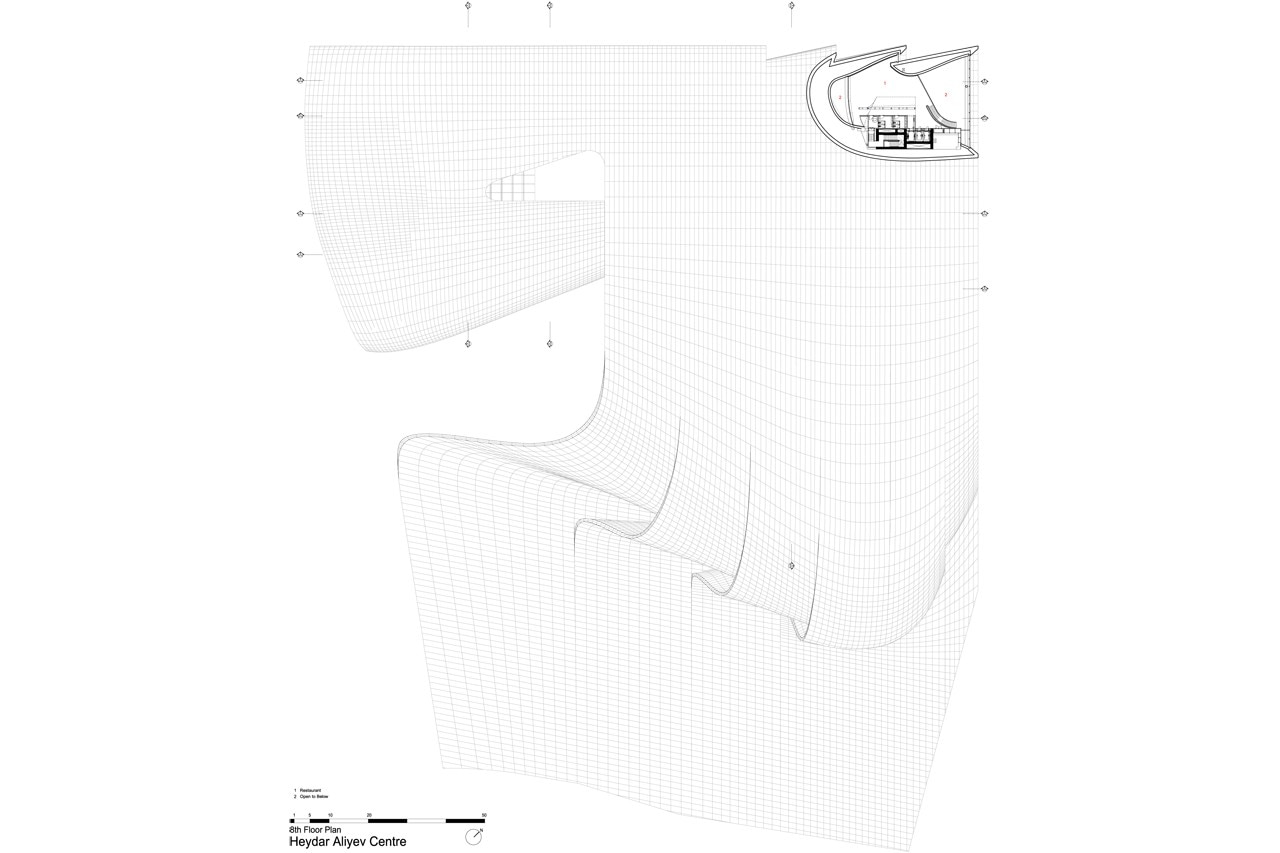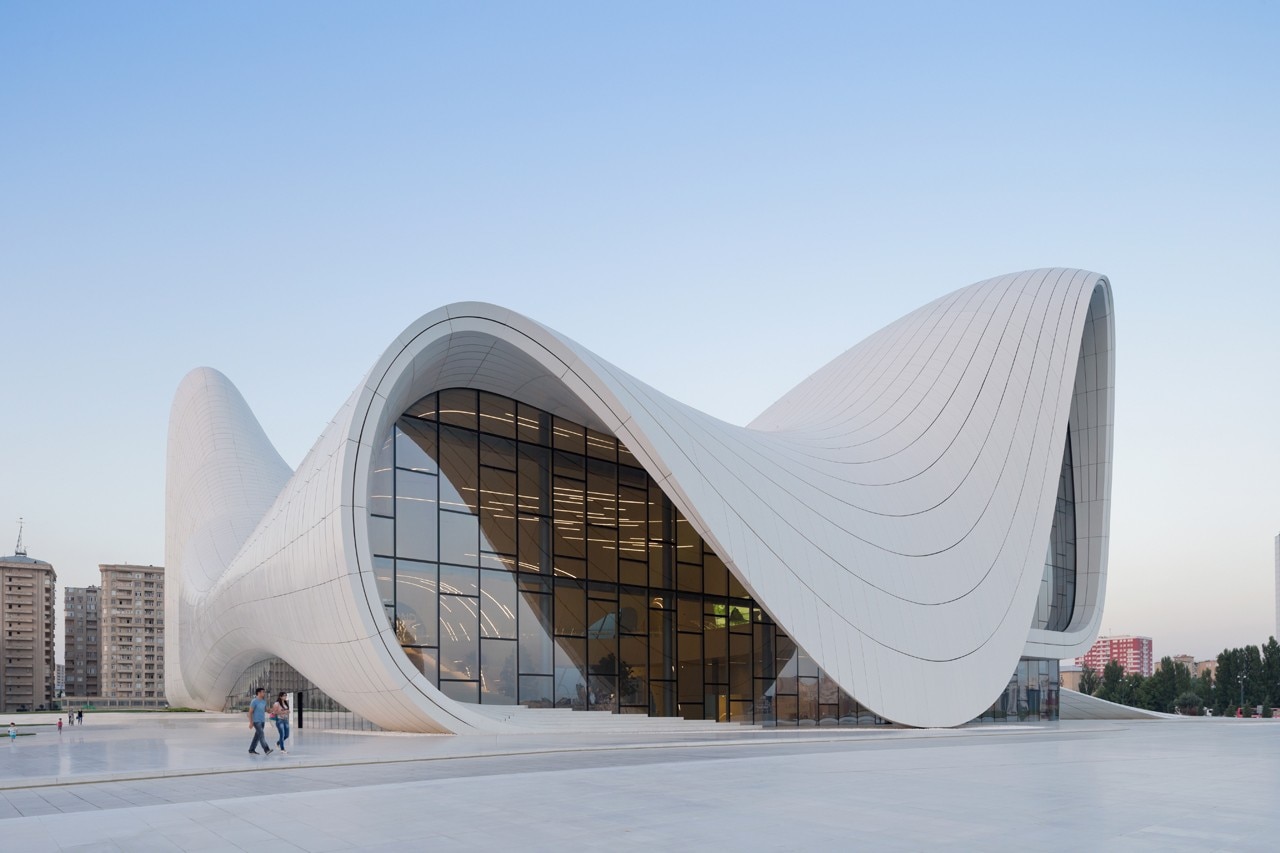
 View gallery
View gallery
The design of the Heydar Aliyev Center establishes a continuous, fluid relationship between its surrounding plaza and the building’s interior. The plaza, as the ground surface; accessible to all as part of Baku’s urban fabric, rises to envelop an equally public interior space and define a sequence of event spaces dedicated to the collective celebration of contemporary and traditional Azeri culture. Elaborate formations such as undulations, bifurcations, folds, and inflections modify this plaza surface into an architectural landscape that performs a multitude of functions: welcoming, embracing, and directing visitors through different levels of the interior. With this gesture, the building blurs the conventional differentiation between architectural object and urban landscape, building envelope and urban plaza, figure and ground, interior and exterior.
Responding to the topographic sheer drop that formerly split the site in two, the project introduces a precisely terraced landscape that establishes alternative connections and routes between public plaza, building, and underground parking. This solution avoids additional excavation and landfill, and successfully converts an initial disadvantage of the site into a key design feature.
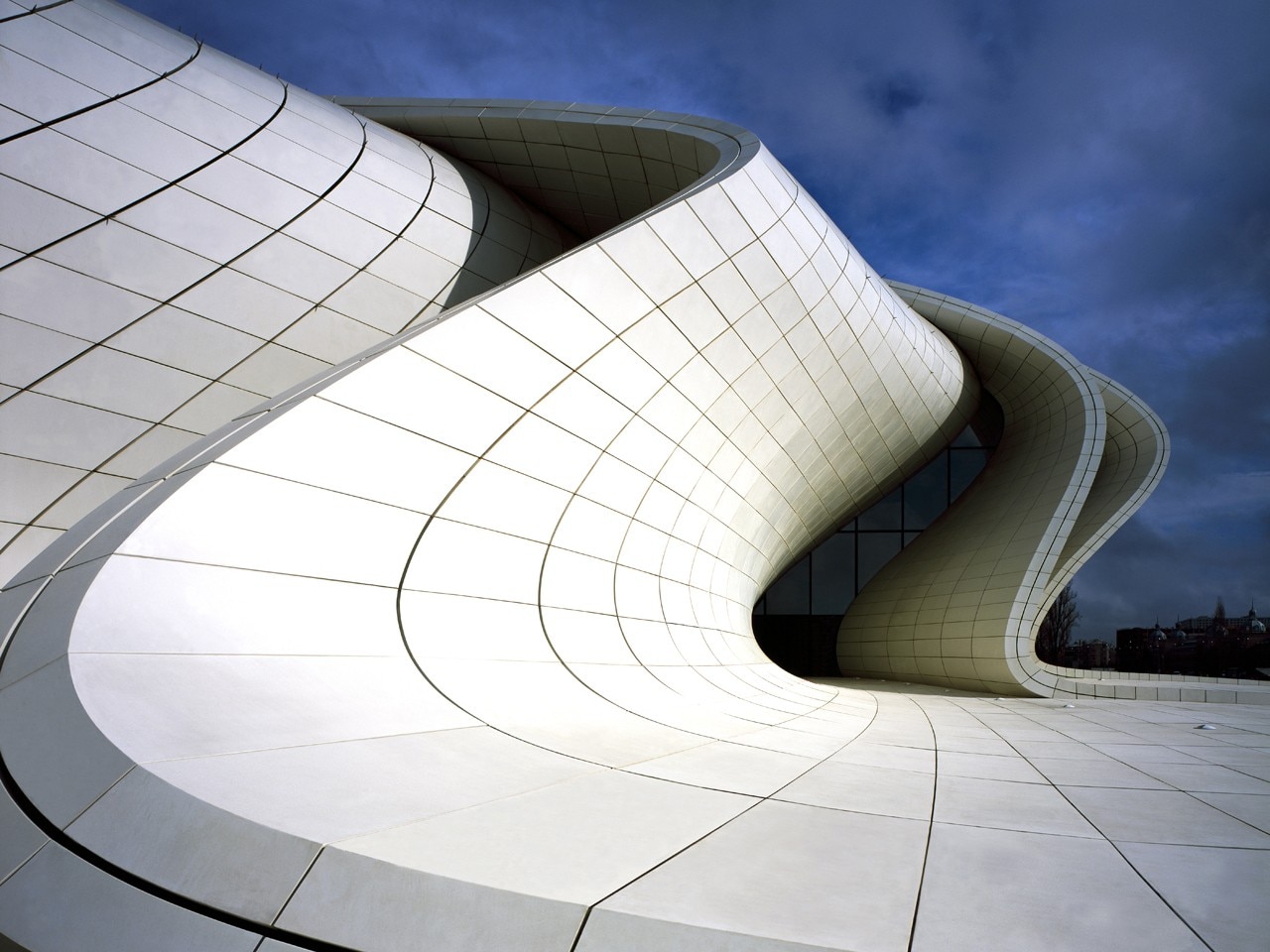
 View gallery
View gallery
One of the most critical yet challenging elements of the project was the architectural development of the building’s skin. Our ambition to achieve a surface so continuous that it appears homogenous, required a broad range of different functions, construction logics and technical systems had to be brought together and integrated into the building’s envelope. Advanced computing allowed for the continuous control and communication of these complexities among the numerous project participants.
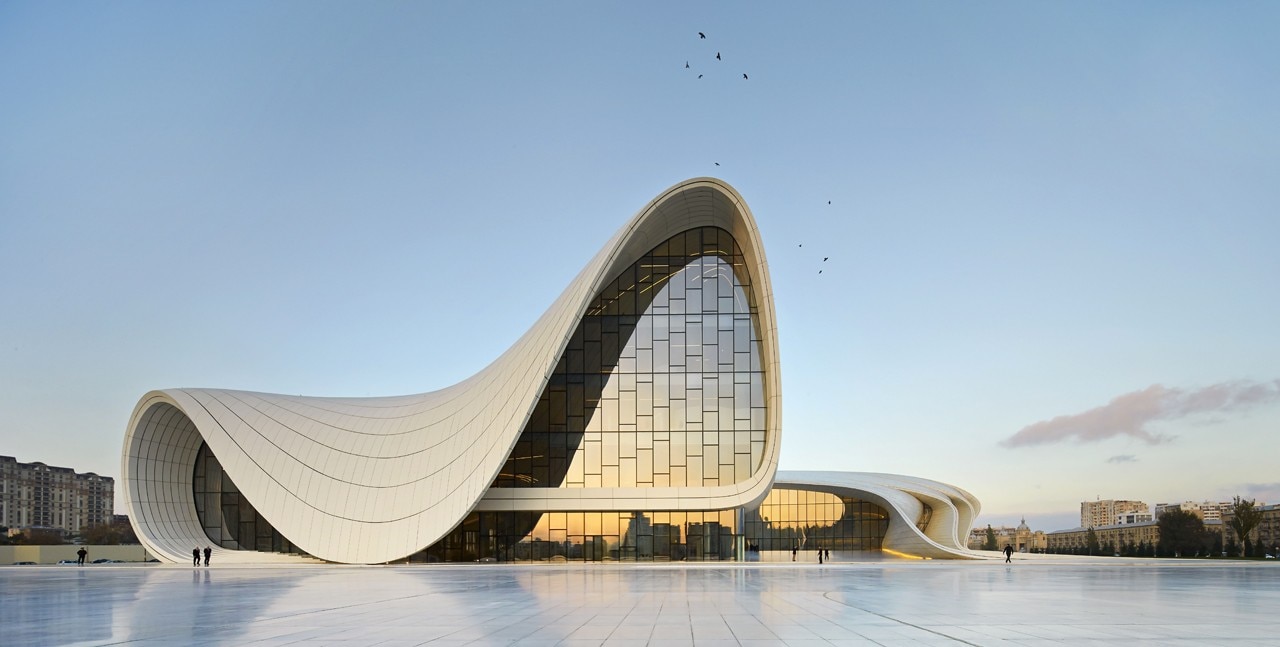
 View gallery
View gallery
In this architectural composition, if the surface is the music, then the seams between the panels are the rhythm. Numerous studies were carried out on the surface geometry to rationalize the panels while maintaining continuity throughout the building and landscape. The seams promote a greater understanding of the project’s scale. They emphasize the continual transformation and implied motion of its fluid geometry, offering a pragmatic solution to practical construction issues such as manufacturing, handling, transportation and assembly; and answering technical concerns such as accommodating movement due to deflection, external loads, temperature change, seismic activity and wind loading.
Saffet Kaya Bekiroglu
Project Designer and Architect, Zaha Hadid Architects
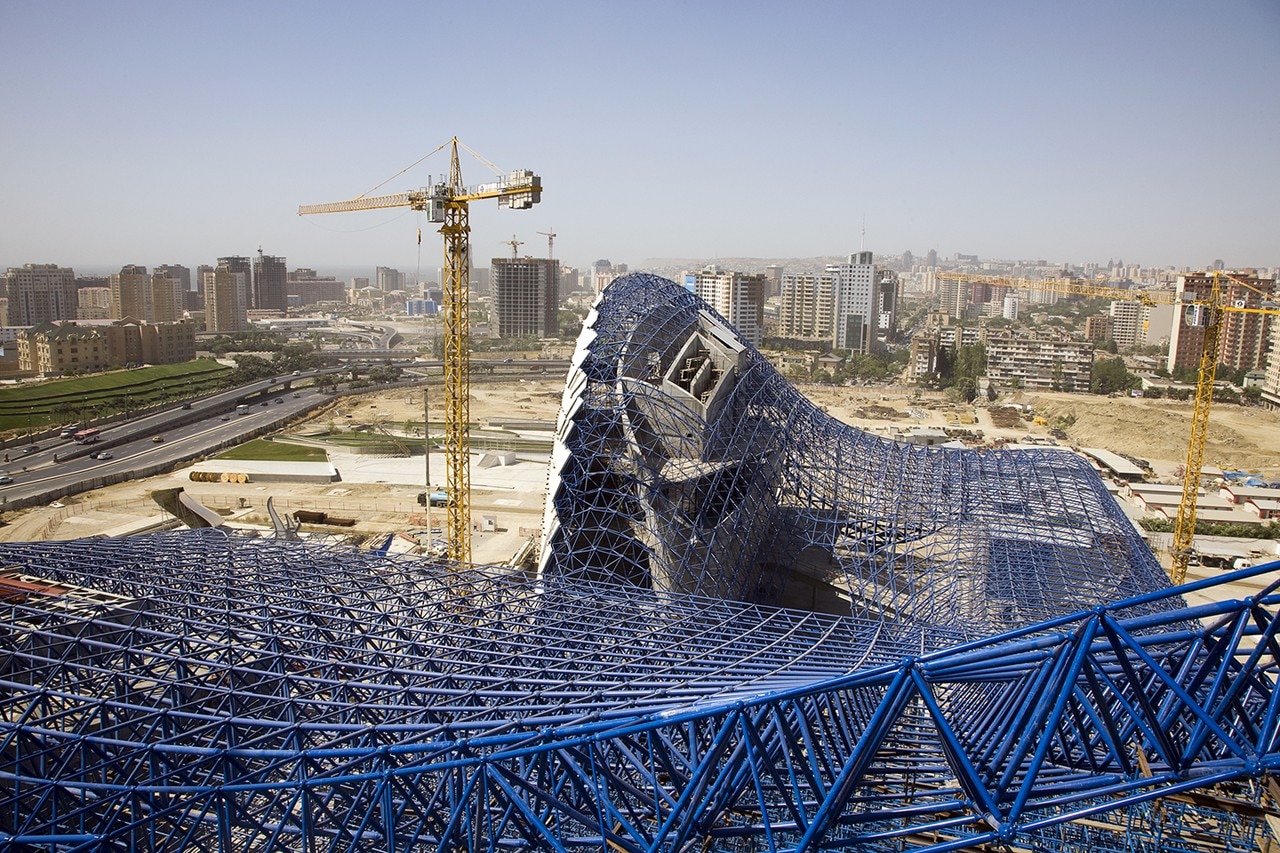
 View gallery
View gallery
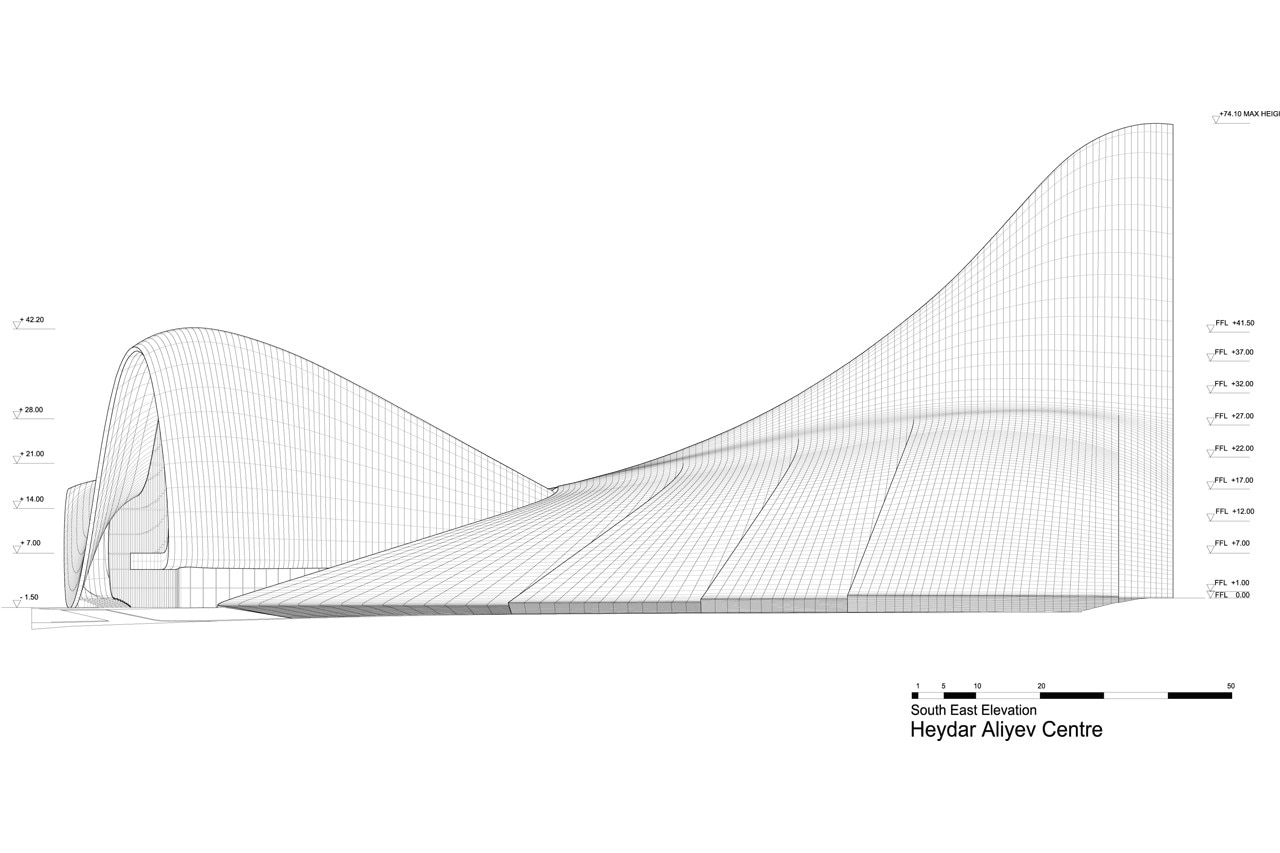
\\zaha-hadid.com\Data\Projects\1940_CosiFabTutte_LAPhil\1940_Production\user_sketch\Sara - Baku\elevation\With Annotation\South
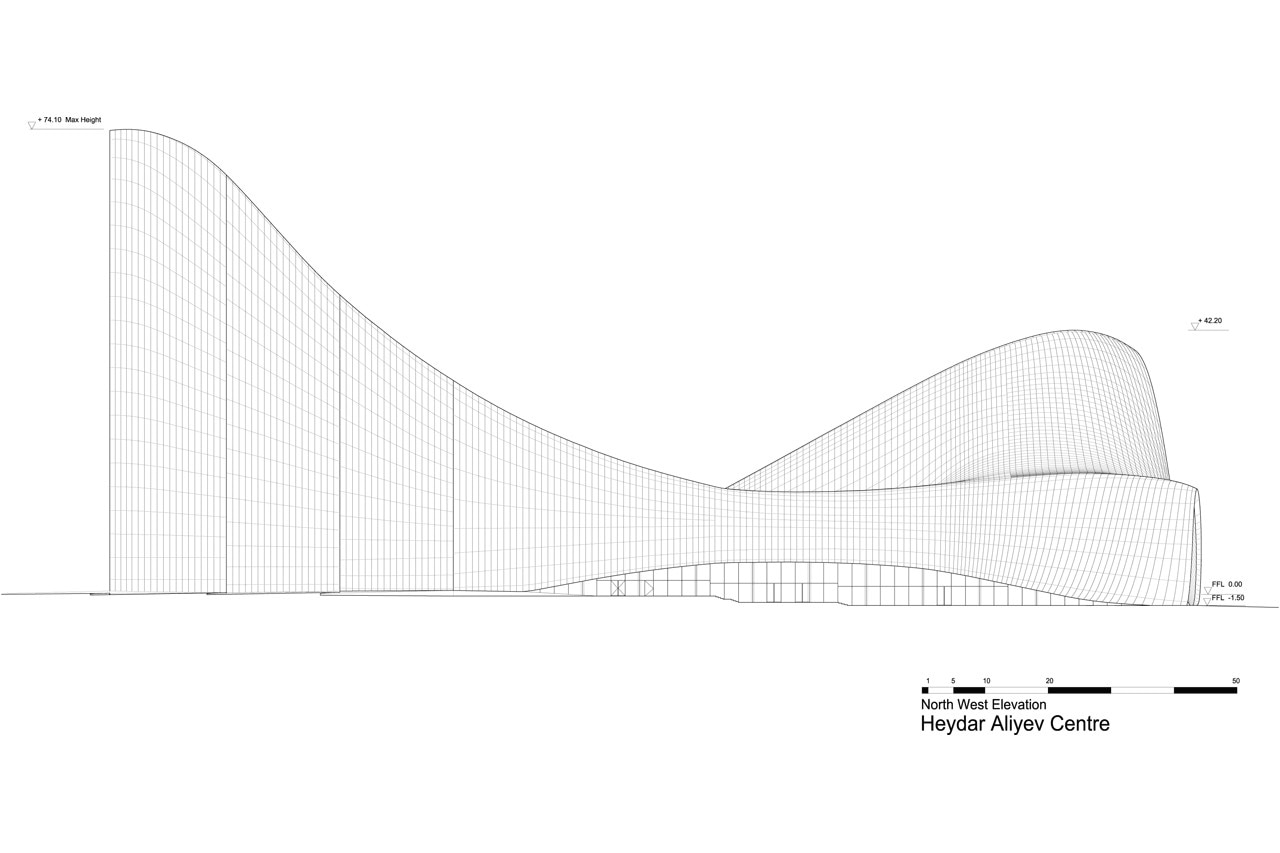
\\zaha-hadid.com\Data\Projects\1940_CosiFabTutte_LAPhil\1940_Production\user_sketch\Sara - Baku\elevation\With Annotation\North
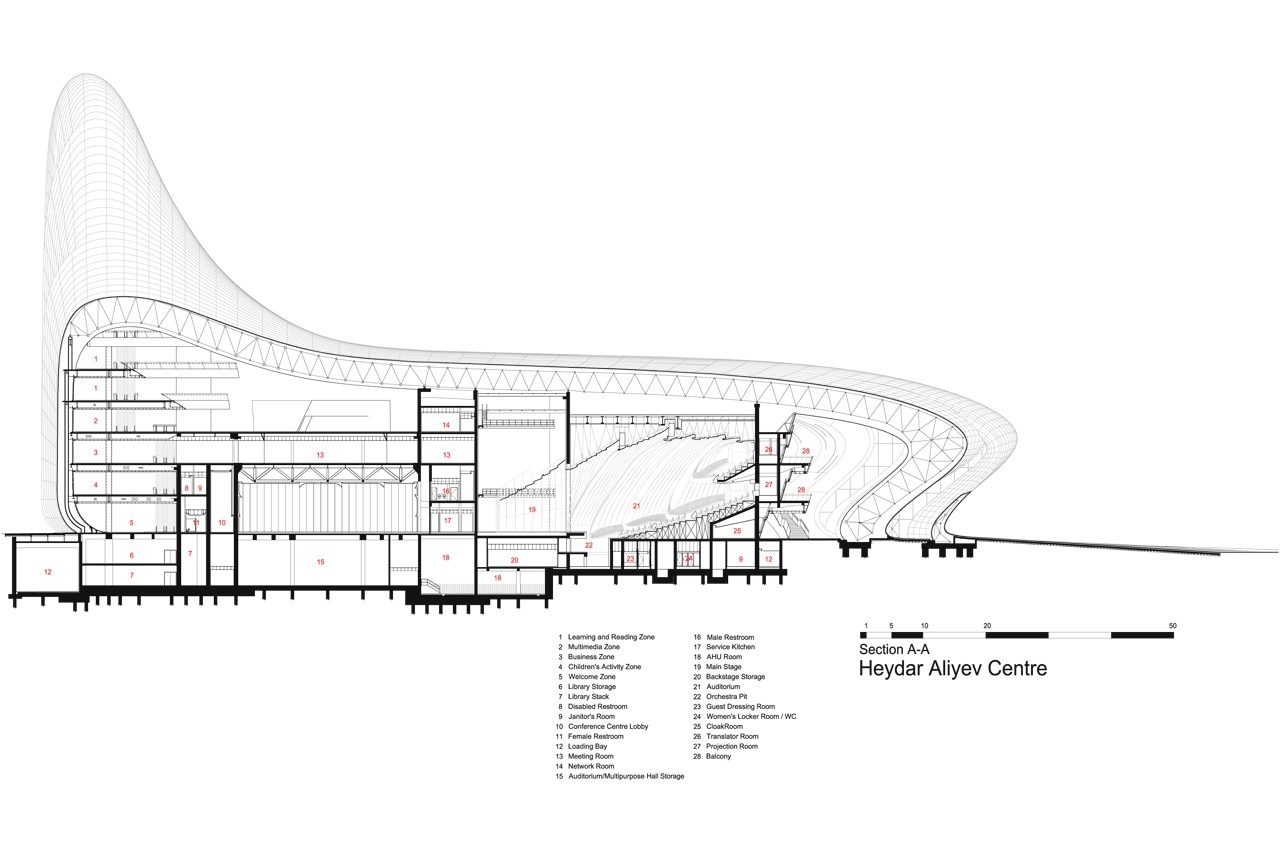
\\zaha-hadid.com\Data\Projects\1940_CosiFabTutte_LAPhil\1940_Production\user_sketch\Sara - Baku\section\With Annotation\MB_A_30
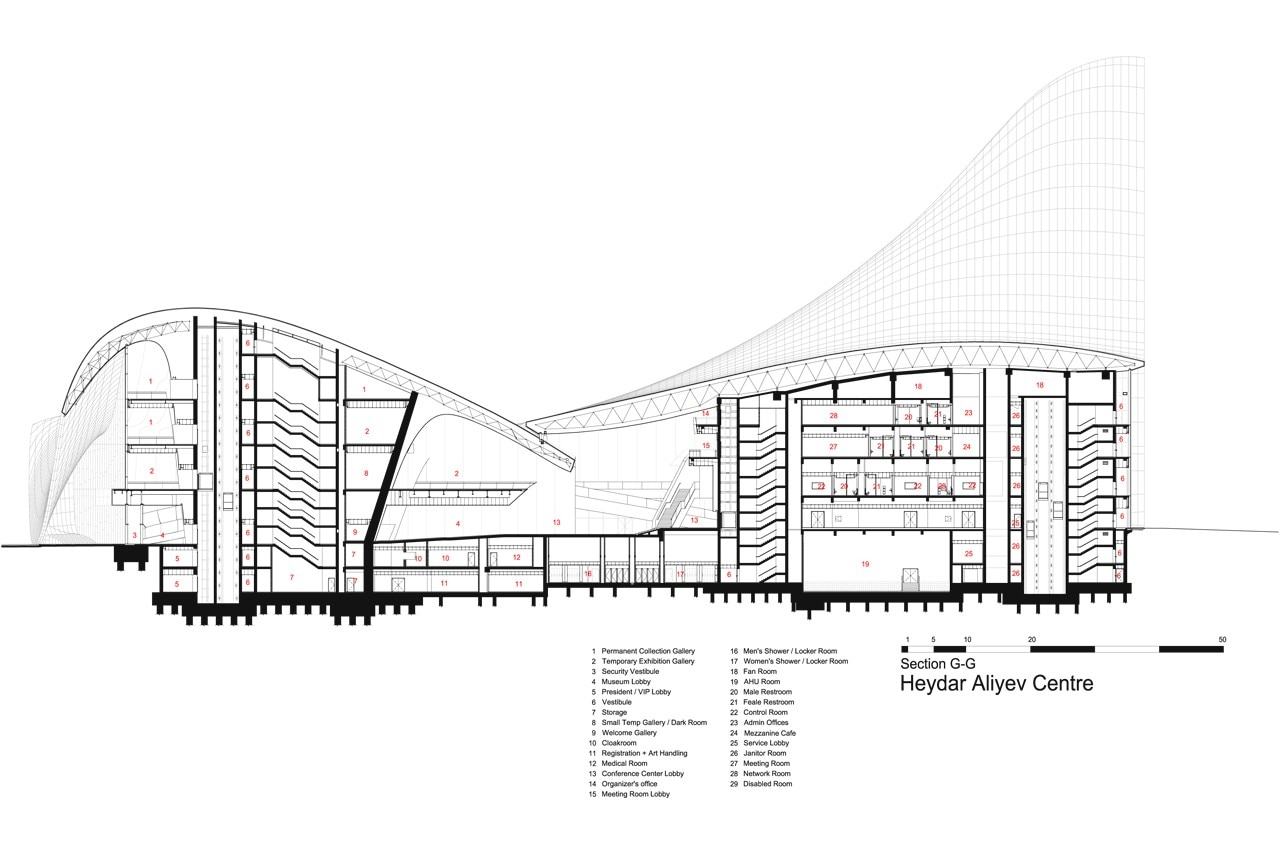
\\zaha-hadid.com\Data\Projects\1940_CosiFabTutte_LAPhil\1940_Production\user_sketch\Sara - Baku\section\With Annotation\MB_A_30
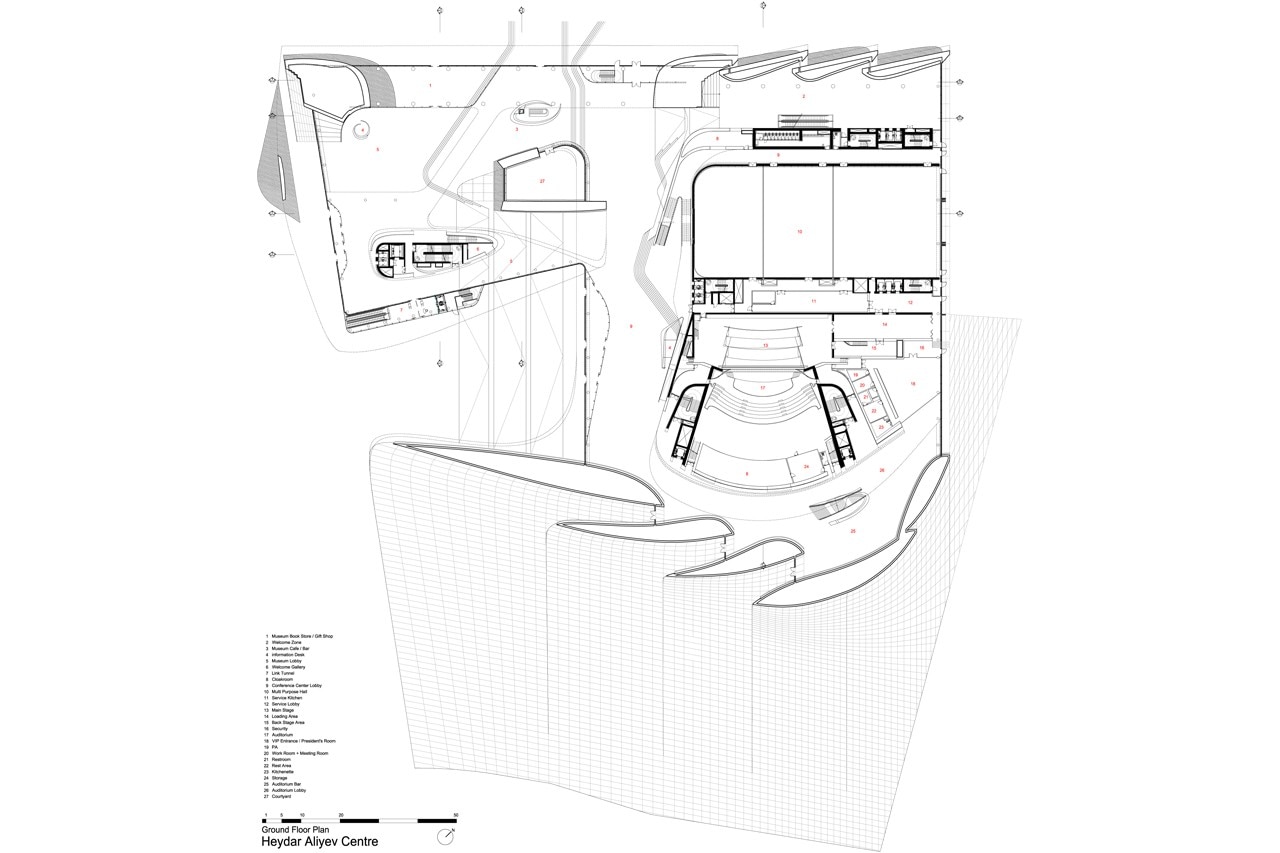
\\zaha-hadid.com\Data\Projects\1940_CosiFabTutte_LAPhil\1940_Production\user_sketch\Sara - Baku\floor plans\00 AutoCAD Publicat
Heydar Aliyev Center, Baku, Azerbaijan
Program: Mixed-use cultural center
Architects: Zaha Hadid Architects
Client: The Republic of Azerbaijan
Total floor area: 101,801 sqm
Completion: May 10, 2012


